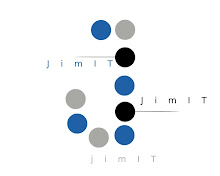1) GreyBox
GreyBox allows you to launch other websites in a modal window (like a pop-up window, but it doesn’t open another browser). This is great for when you’re linking to multiple websites and don’t want the user to navigate away from your web page or to open another browser window that might be blocked by the user’s browser. Using GreyBox is easy and involves a 3-step process outlined in the web page.
Here’s some key pages regarding GreyBox: Download page, Documentation, Examples, Installation, and Advanced Usage (for the more experienced JavaScript’ers, check this page out for tips on how you can extend the library’s functionality).
2) instant.js
instant.js effect dynamically adds a Polaroid-like effect to your images (it tilts it and adds a border with a drop shadow), simulating this popular image technique without having to use a digital-image editing application such as Photoshop.
This can be utilized for when you’re applying this popular visual technique on multiple images and you don’t want to manually edit the pictures yourself (you can probably batch process, but that’s really only effective for simple actions such as resizing images, cropping uniformly, etc.).
3) mooTable
mooTable allows you the ability to provide sorting of table data ( without a page refresh) by utilizing the DOM instead of requesting the data again, sorted another way. Implementation is simple, and configuring the sorting of tables is a breeze.
This library needs the mootools framework, which you can download here. You can also find a forum post on the mootools boards by the author of mooTable, with feedback from other mootools developers.
4) FancyForm
FancyForm replaces boring form controls such as radio buttons and check boxes, with fancier ones. The basic implementation is a two-step process: (1) include JavaScript files on the web page, and (2) assign your form controls the class="checked" or class="unchecked" for checkboxes and class="selected" and class="unselected" for radio buttons. Very unobtrusive JavaScript.
This script needs mootools as well (and was developed for version 1.1).
5) image menu
image menu, developed by phatfusion, is a spiffy horizontal menu that expands when you hover over menu items (such as images).
You can use this for displaying a montage of images that are each partly hidden, but that the user can reveal fully by hovering over it.
This script needs mootools as well (and was developed for version 1.1)
6) AmberJack: Site Tour Creator
Here’s a lightweight JavaScript library that allows you to create a scripted website tour, allowing users to visit key web pages in real-time with a small description box on each page.
This allows users to take a tour of the various sections of a website, without them having to view a static demo created in flash or some other method. Extra bonus, you can download various “skins” or even create your own, to match the look and feel of your website. Here’s the skins gallery so you may see if they have a theme that doesn’t clash with your website.
7) ImageFlow
Inspired by iPod’s “coverflow”, ImageFlow is a simple effect that displays a collection of images that the user can scroll there using a scroll bar at the bottom of the image set. Advanced developers can probably modify the slider to spruce it up a bit more.
When the user clicks on an image, it re-directs them to another web page with the image displayed, so an excellent idea would be to use this in conjunction with a modal box script to open the image instead.
Update: Just now, the author of ImageFlow emailed me announcing ImageFlow version 0.9. Check it out here (it fixes the issue of the image opening another browser window when clicked, and it works with Lightbox compatibility). Thanks for the update Finn!
8) ShadowBox.js Media viewer
ShadowBox is “a cross-browser, cross-platform, cleanly-coded and fully-documented media viewer application written entirely in JavaScript” (wow that’s a mouthful, isn’t it?).
What distinguishes shadowbox from the plethora of other modal boxes out there like Lightbox 2, is that it supports other file types besides images, such as a flash videos, embedded youtube videos, Apple.com Trailers, and web pages (a log-in page for example, that saves the user a trip to another page just to log on). Worthwhile script to test and play around with.
9) TJPzoom 3 - image magnifier
TJPzoom allows you to zoom in on particular sections of a high-resolution image. Holding down the mouse button and dragging up or down, can decrease or increase the zooming of the image magnifier tool.
One way of utilizing TJPzoom is to scale high-resolution pictures down to fit a web page, and then allow the users to zoom into parts of the image using the magnifier tool.
10) mootools Tips
mootools Tips is part of the mootools framework that allows you to provide a highly configurable way of showing tool tips to the user; when the user hovers over a link or image, additional information about the element appears on the screen.
Some options that you can tweak are the: CSS styles (to make it look different from the default black background and white text), transition speed, style of how the tool tip appears on-screen, and how long you want the tool tip be displayed. This requires the mootools framework.
Saturday, August 29, 2009
Subscribe to:
Post Comments (Atom)

No comments:
Post a Comment